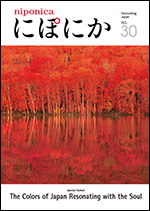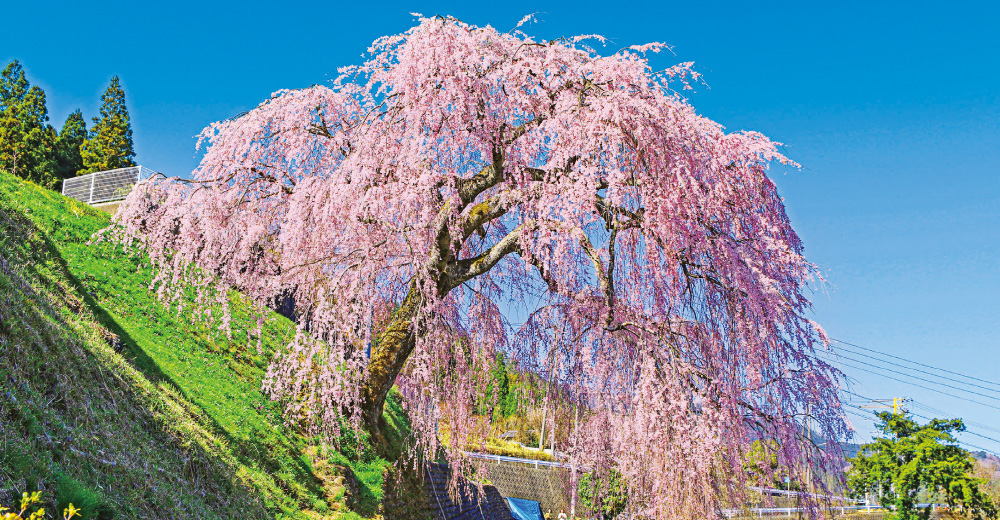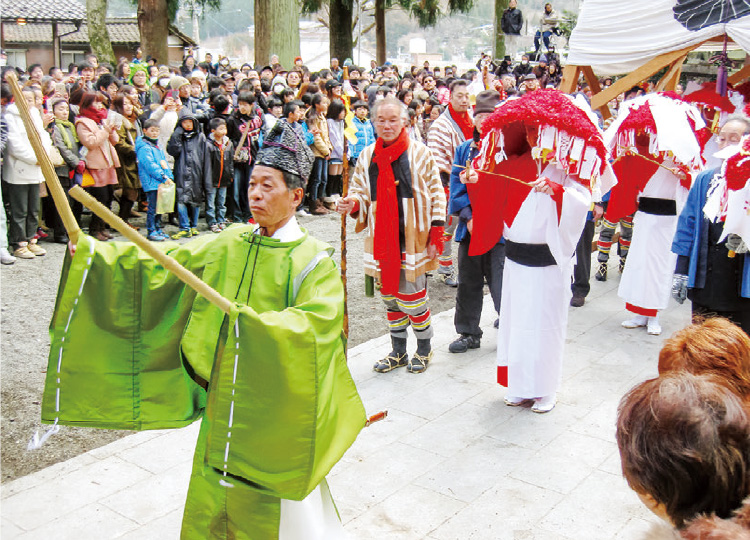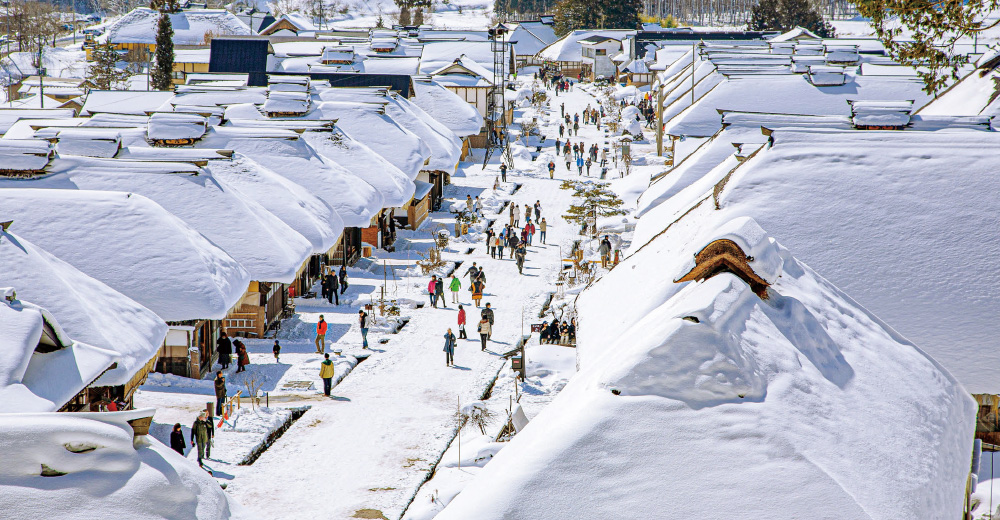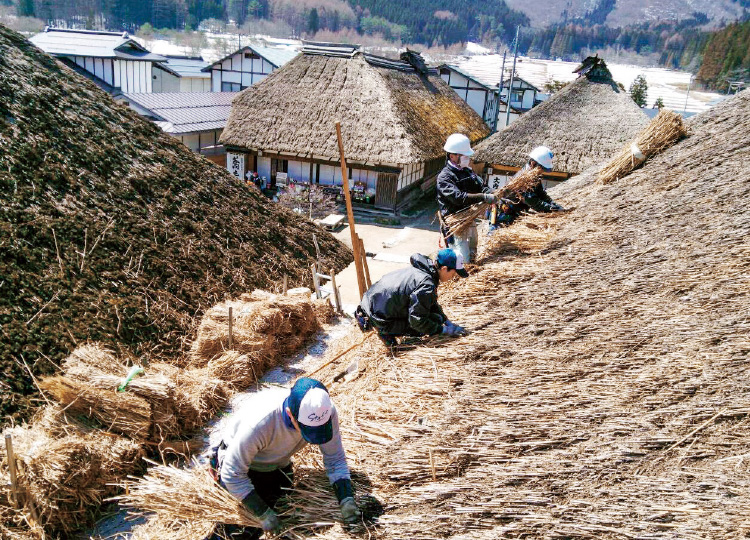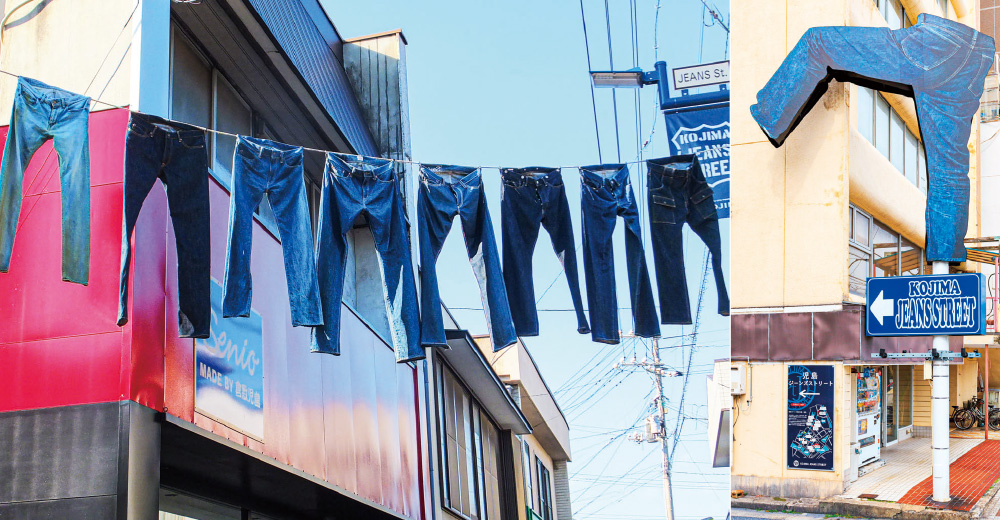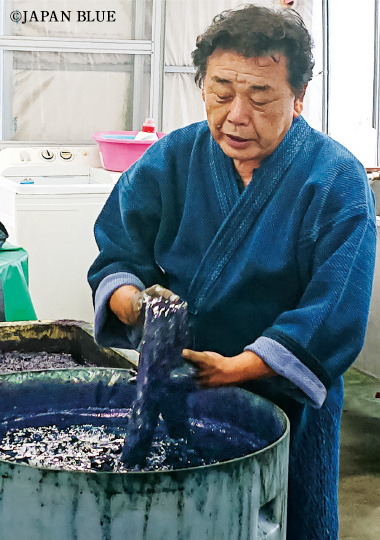
2021 NO.30
MenuThe Colors of Japan Resonating with the Soul

Colors in the Town
Iwataro’s weeping cherry, over a hundred years old.
Located in the Chubu area (central Japan), Gero has an elevation difference of approximately 2,800 meters between the north and south of the city, so scenery awash in cherry blossom colors can be enjoyed sequentially at different spots for about a month from the end of March. There are many old trees with intimate ties to the community, for example, “Iwataro’s weeping cherry” that is said to be named after an ancestor who planted it, and the “Nawashiro-Zakura” that is named after the old legendary custom of people waiting for this tree to bloom as a signal to start preparing rice seedlings (nawashiro).
Ouchi-juku in the winter, with its dazzling snow.
Amid the cold air, the sloping silhouettes of snow-covered thatched roofs give a sense of warmth. Ouchi-juku has remnants of its former status as a “post town” where travelers would rest during their long journeys, with homes lined up along a road in a landscape that has not changed for over four centuries. To protect the legacy of this region for future generations, the town created a resident charter with three fundamental rules prohibiting sale, leasing, and demolition. The community also strives to learn and pass on roof-thatching techniques to preserve the scenery.
*On December 2020, “Traditional skills, techniques, and knowledge for the conservation and transmission of wooden architecture in Japan” has been inscribed on the UNESCO’s Representative List of the Intangible Cultural Heritage of Humanity, which includes the roof-thatching.
Kojima Jeans Street stretches for about 400 meters and is lined with stores operated by local manufacturers among others.
In Kurashiki City, which overlooks the Seto Inland Sea in Western Japan, Kojima Jeans Street boasts a unique presence. It is known as the first location in Japan to produce jeans and continues to be a center of true artisanship. The color of indigo is meticulously layered and deepened by immersing fabrics in dye, wringing, exposing to air to oxidize, and then repeating. Dyed with skilled artisanship, this blue is said to have depth and is long-lasting with resistance to fading.

